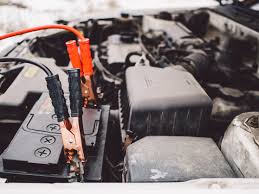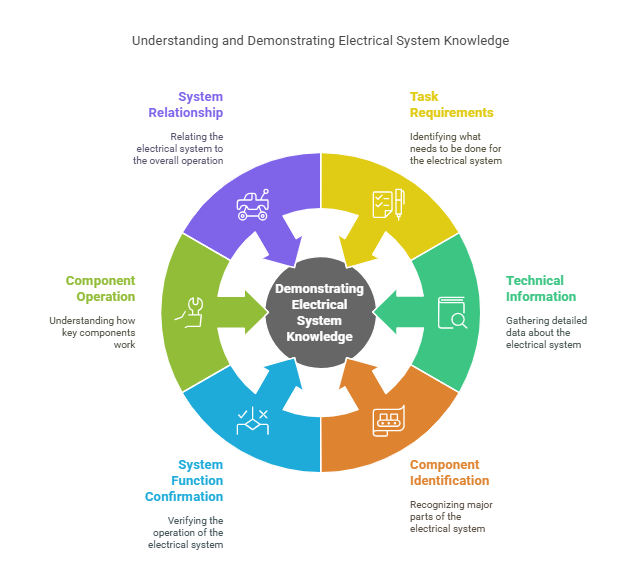Demystifying Automotive Electrical Systems and Components
Posted by SkillMaker in Mar, 2025
What is a concise description of identifying automotive electrical systems and components?

Identifying automotive electrical systems and components involves understanding the structure, function, and interconnections of electrical parts in a vehicle. This includes recognising how systems like the ignition, lighting, battery, and sensors work together to enhance vehicle performance and safety.
Listen to this article as a podcast
Why do people in the automotive industry need to identify automotive electrical systems and components?
People in the automotive industry need to identify electrical systems and components to ensure vehicles operate safely and efficiently. Knowledge of these systems is crucial for diagnosing and repairing faults, enhancing fuel efficiency, integrating new technologies, and maintaining the overall performance of the vehicle. This expertise is essential for automotive engineers, mechanics, electricians, and anyone involved in vehicle maintenance and manufacturing.
“Mastering the knowledge of vehicle electrical systems enhances safety, performance, and the ability to innovate within the industry.”
What are the key components or elements of automotive electrical systems?
Key components of automotive electrical systems include:
- Battery: Supplies electrical energy to start the engine and power accessories.
- Alternator: Charges the battery and powers electrical systems when the engine is running.
- Starter Motor: Engages the engine’s flywheel to start the engine.
- Ignition System: Sparks the fuel-air mixture in the engine cylinders to start combustion.
- Lighting and Signalling: Includes headlights, taillights, indicators, and brake lights for road safety.
- Wiring Harnesses: Bundles of wires and connectors linking all electrical components.
- Sensors and Actuators: Measure conditions and control mechanical systems and processes.
What key terms, with descriptions, relate to automotive electrical systems and components?

Registered Trademark®
- Voltage: The potential difference, which powers electronics by causing currents to flow.
- Current: The flow of electrical charge through a circuit.
- Resistance: A material’s opposition to the flow of current.
- Fuses: Safety devices that protect circuits from overcurrent by breaking the circuit when a threshold is exceeded.
- Relays: Electrically operated switches used to control a circuit by a low-power signal.
Who is typically engaged with operating or implementing knowledge of automotive electrical systems?
Individuals such as automotive electricians, mechanics, electrical and electronics engineers, and vehicle assemblers are typically engaged in operating and implementing knowledge of automotive electrical systems. These professionals rely on their understanding of complex electrical systems to maintain, repair, and innovate vehicle technology.
How does knowledge of automotive electrical systems align or integrate with other components of the automotive industry in Australia?

Knowledge of automotive electrical systems is integral to the broader automotive industry, supporting various functions such as diagnostics, vehicle performance optimisation, technological advancements, and safety enhancements. Understanding these electrical systems enables seamless integration with modern automotive trends, including electric vehicles (EVs) and smart car technologies, thereby propelling the industry forward.
Where can the student go to find out more information about automotive electrical systems and components?
What job roles would be knowledgeable about automotive electrical systems and components?
Roles include:
- Automotive Electricians
- Vehicle Technicians
- Diagnostics Engineers
- Electrical Engineers
- Maintenance Supervisors
What is vehicle identification of automotive electrical systems like in relation to sports, family, or schools?

In relation to sports, mastering automotive electrical systems is similar to an athlete understanding each muscle and mechanism to enhance performance. For families, it’s like knowing the inner workings of a home or car to ensure smooth daily operations. In schools, it can be compared to learning fundamental subjects to build a career foundation; comprehending vehicle electrical systems lays the groundwork for a successful career in automotive engineering or maintenance.
(The first edition of this post was generated by AI to provide affordable education and insights to a learner-hungry world. The author will edit, endorse, and update it with additional rich learning content.)
(Skillmaker – 2025)

 Post Tagged with
Post Tagged with